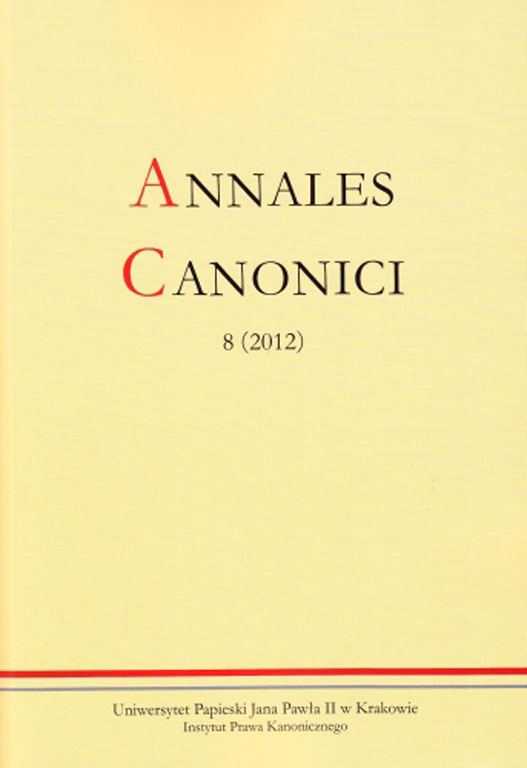Reason, Faith and Marriage. The Meaning of the Identity Between Marital Bond and its Sacramental Dimension in the Marriage of two Baptized Persons (can. 1055 § 2)
DOI:
https://doi.org/10.15633/acan.591Keywords:
marriage, marriage bond, sacrament, can. 1055 § 2, ChurchAbstract
The article discusses the meaning of the canonical and theological principle of the identity between marriage bond and sacrament in the case of two baptized persons. First the author presents a historical and contemporary tendency to draw an artificial border line between human nature along with its requirements and positive law, for which the requirements should be one of the sources. Next he shows in what way the dissociative tendency helps separate the domain of reason from the domain of faith, which converge at the point where nature demands obedience from reason. Then the author demonstrates the impact of the dissociation on the understanding of the relation between a natural and a sacramental aspect of marriage. In this context the author discusses the specific nature of the sacrament of matrimony as compared with six other sacraments and the character of the matrimonial consent in the perspective of its object, that is sacramental marriage. Specifically, he focuses on the idea of indirectness in the “cause-effect” relation between the matrimonial consent and sacramental dimension of marriage. In the concluding part of the article the author enters into polemics with the criticism aimed at such an understanding of indirectness – called an “anti-personalist sacramental automatism” – which apparently belittles the significance of the influence of faith on the efficacy of the matrimonial consent. The polemics incorporates the theses formulated by John Paul II in his theology of the body and strives at showing a close relationship between a “sacramental” dimension of the natural marriage and the sacramental dimension of Christian marriage. This, in turn, serves the author to show the relationship between reason and faith and to formulate a brief pastoral conclusion.
Downloads
Published
Issue
Section
License
Copyright (c) 2012 Andrzej Wójcik

This work is licensed under a Creative Commons Attribution 4.0 International License.
The author declares that he owns the copyright to the work (article) and that it is not limited in the scope covered by the above declaration and that the work (article) is an original work and does not infringe the copyright of other persons.
The author allows the Pontifical University of John Paul II in Krakow to use the paper free of charge, non-exclusive and unlimited in time by, i.e.:
– keeping in records and reproduction of the copies of the work using printing, reprography, magnetic recording and digital technology;
– trade in the original or copies on which the work has been recorded (introduction to the market, lending or rental of the original or copies, public exhibition, display, as well as making the work available to the public in such a way that everyone can have access to it in a place and at a time chosen by them);
– inclusion of the work in a collective work;
– granting by the Pontifical University of John Paul II in Krakow a Creative Commons Sub-licence Authorship Recognition-Non-commercial Use-No Subsidiaries 3.0 Poland
The Pontifical University of John Paul II in Krakow makes the work available on the Magazine Platform of the university under the Creative Commons Attribution-Non-commercial Use-No Subsidiary Works 3.0 Poland license.
Thus, it entitles all interested parties to use the work under the following conditions:
- the author and the title of the work will be given,
- the place of publication (journal title and internet address of the originally published work) will be indicated,
- the work will be distributed in a non-commercial manner,
- no dependent works will be created.

